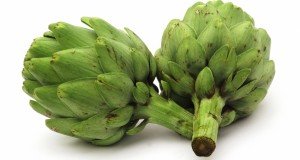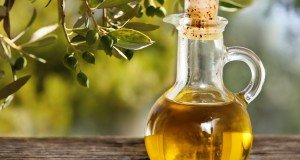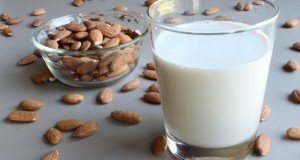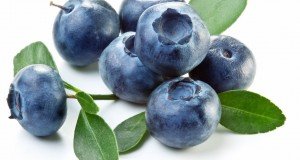One in four people are living with nonalcoholic fatty liver disease, a new silent epidemic
(NaturalHealth365) Nonalcoholic fatty liver disease (NAFLD) currently affects one in four people in the United States. From an infrequently-occurring and little-known condition, NAFLD has morphed into a major epidemic – and is now the most common cause of chronic liver disease in America.
As researchers scramble to identify better methods of prevention and treatment, a first-of-its-kind study reveals nonalcoholic fatty liver disease’s shocking economic impact – and sheds new light on its potentially life-threatening consequences and complications.
Editor’s note: Click here to access the Fatty Liver Docu-Class, hosted by your truly Jonathan Landsman. This event features 33 top experts on liver health and integrative healthcare. You’ll discover how to detoxify the body and avoid unwanted disease symptoms.
Researcher says: Nonalcoholic fatty liver disease represents a potential “tsunami” of illness and expenditure
In the study, conducted by Intermountain Healthcare in Salt Lake City, researchers examined the medical records of 4,569 patients over a ten-year period (from 2005 to 2015). In doing so, they established a control group of over 12,000 people who did not have a diagnosis of NAFLD.
Analyzing the cost per patient – as well as overall costs to both groups – the team took into consideration the cost of inpatient hospitalization, emergency room visits, liver transplants, medical procedures, new medications (or changes to existing medications) and mortality – in order to arrive at the cost to the United States healthcare system.
And – at a whopping $32 billion a year – the price tag is staggering.
Study leader Richard Gilroy, M.D., medical director of Intermountain Medical Center’s hepatology and liver transplant program, pulled no punches in remarking on the implications of the study.
Dr. Gilroy predicted that NAFLD – already a “major epidemic” – will drive up medical costs for years to come. And, he warned, NAFLD could bring a virtual “tsunami” of costs and problems if the causes of the disease are not addressed.
The investigation did yield one bright spot, with study author Michael Charlton, M.D., noting that the research led to the validation of a predictive tool that allows doctors to assess which NAFLD patients are at a higher risk of developing liver damage. This, said Gilroy, will allow them to intervene with nutritional and therapeutic options.
NAFLD can progress to life-threatening complications
NAFLD – defined as excess fat in the liver that is not caused by alcohol – is primarily caused by excess caloric intake, and is closely associated with the obesity epidemic. (In fact, a 2006 study demonstrated that 84 to 96 percent of patients undergoing bariatric surgery have NAFLD).
In other words: obesity, inactivity and poor nutrition create a “perfect storm” of conditions that trigger nonalcoholic liver disease – with exposure to medications and environmental toxins sometimes playing a role as well.
Mild cases of NAFLD may feature no symptoms. In fact, many people with the condition do not even realize they have it.
If untreated, however, NAFLD can progress to grave consequences – including nonalcoholic steatohepatitis, or NASH, which features liver inflammation and scarring.
NASH can block the flow of blood in the liver, interfere with the processing of nutrients and hormones, and impair effective detoxification. Consequences of NASH – which may necessitate a liver transplant – can include liver failure, liver cirrhosis (major scarring) and liver cancer.
Possible signs and symptoms of NAFLD include fatigue, weight loss, jaundice (yellowing of eyes and skin), confusion, pain in the center or right upper part of the belly, bloating, dark urine, excessive sweating and a tendency towards easy bruising.
Proper nutrition can help treat NAFLD
Natural health experts advise addressing NAFLD with a diet free of GMOs and pesticides – with particular attention to avoiding glyphosate, the active ingredient in the weedkiller Roundup. Glyphosate is linked with serious liver disease, and animal studies have suggested that exposure to very small quantities – such as amounts found in drinking water – can cause liver damage and scarring.
Aside from eating an organic diet and drinking pure, filtered water, experts advise eliminating refined sugar and alcohol, as well as sugar – and fat-laden “fast” foods and processed foods.
Eating iron-rich foods – such as parsley, arugula and cilantro – can help detoxify the liver, as can choosing cruciferous vegetables such as Brussels sprouts, broccoli and kale.
Beet juice is rich in betaine, an amino acid that helps the liver neutralize toxins. And berries and dark cherries are great sources of anthocyanins, antioxidant plant pigments which protect against oxidative stress that can contribute to NAFLD.
Promote liver health with natural herbs and supplements
When it comes to combating NAFLD, milk thistle extract could be your greatest ally. Milk thistle’s active ingredient, silymarin, detoxifies the liver, decreases oxidative stress and helps clear the blood of toxins.
Silybin (a constituent of silymarin) has been shown in clinical studies to reduce the biochemical, inflammatory and ultrasonic markers of fatty liver.
There is even evidence that milk thistle extract can help repair and rejuvenate liver cells.
And, finally, milk thistle has been shown in studies to work against insulin resistance – which contributes to NAFLD.
Look for a high-quality milk thistle extract, standardized to contain 70 to 80 percent silymarin. Of course, you shouldn’t attempt to treat liver disease with milk thistle – or any other herb or supplement – without first consulting your integrative healthcare provider.
Other beneficial supplements for liver health include alpha-lipoic acid – which helps the body produce and recycle the important natural antioxidant glutathione – and the mineral selenium.
On a ‘special’ food note: Dandelion root and burdock can help detoxify and support the liver.
Although the incidence of NAFLD is increasing at a frightening rate, the condition is largely preventable – and can be addressed with simple lifestyle changes. If you are overweight, diabetic, or have a family member with liver disease, being screened for NAFLD may be one of most important steps you can take for your overall health.
Sources for this article include:
Eurekalert.org
NaturalHealth365.com
NaturalHealth365.com
NaturalHealth365.com











